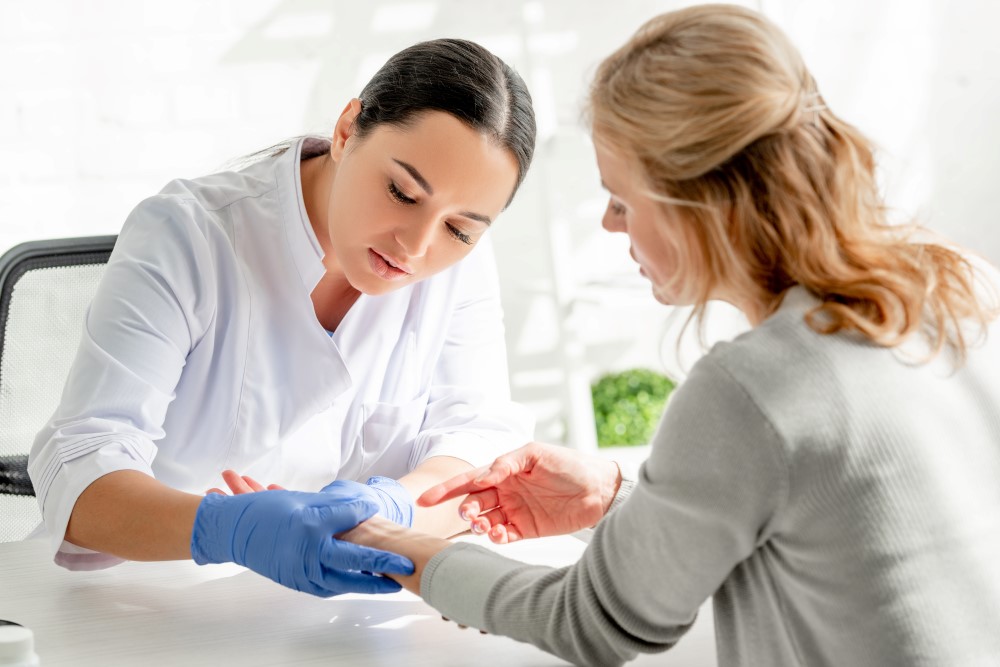How to Reverse Damage Caused by Improper Skin Bleaching Practices

When it comes to taking care of your body, it is important to know that the treatments you use – whether over the counter or through a doctor – can weigh heavily on the health of your skin. Improper skin bleaching, also known as skin lightening, is something that can happen both at home and at a doctor’s office, can cause a range of complications of the skin, from irritation and dryness to extreme cases of hyperpigmentation, chemical burns, and thinning of the skin.
Choosing the right doctor who is knowledgeable and experienced in treating skin damage from improper treatments is crucial to ensuring you receive safe and effective care. Reversing damage caused to the skin due to improper bleaching methods requires patience, dedication, and a mix of medical, skincare, and life interventions.
Here are some things to look for when planning on reviving your skin’s radiance and glow after its deterioration through improper bleaching.
Learn About Skin Damage from Skin Bleaching
Prior to taking corrective actions, it’s important to know about the severity of the damage caused by improper skin bleaching practices. Harsh and harmful chemicals such as hydroquinone, mercury, and corticosteroids in bleachers can cause excessive use of a person’s skin, altering its native barrier, pigmentation, and sensitivity towards sunlight through overuse and improper application.
Some general symptoms of such harm include:
- Inflammation and redness
- Asymmetrical skin tone or hyperpigmented maculae
- Transparent skin with visible blood vessels
- Long-term peeling and dryness
- Long-term sensitivity toward sunlight
Get Rid of Products That Are Toxic to Your Health
The first and most important part is to rid yourself of any toxic bleachers in your routine. Continuing with such items can worsen damage and cause a delay in healing. Look for toxic ingredients such as hydroquinone over 2%, mercury, and high contents of steroids in your current use of such items and remove them, using mild, non-pore occluding skincare products with moisturizing and repairing ingredients.
Consult a Doctor Who Specializes in Dermatology
Seeking a doctor’s expert guidance is beneficial when fixing a problem in your skin. Consulting a dermatologist or trained physician will allow them to evaluate your skin’s state and prescribe whatever your skin specifically needs in its current state. What a dermatologist can prescribe could include:
- Topical treatments: Prescription creams with retinoids, niacinamide, or vitamin C.
- Chemical peels: Gentle peels can gently remove dead layers and stimulate collagen elastin production.
- Laser therapy: Targeted laser can correct hyperpigmentation and stimulate collagen for healthy, healthy skin.
- Microneedling: Microinjuries stimulate healing in the skin, smoothing pores and lessening pigmentation or scarring.
Adopt a Gentle Skincare Routine
A balanced skincare regimen is credited with healing injured skin. Use calm, moisturizing, and chemical-free ingredients. Here is an example of a step-by-step routine:
Clean
Wash with a mild, pH-adjusted face cleanser to remove grime and not strip your skin of its oils.
Hydrate
Include moisturizing ingredients such as hyaluronic acid serums or aloe vera gels to moisturize and calm irritation.
Treat
Apply ingredients such as Vitamin C, niacinamide, or azelaic acid in your products to prevent further pigmentation and stimulate healing.
Moisturize
Apply a rich moisturizer to strengthen the barrier of your skin and protect it against dryness.
Protect
Sunscreen is a must. Apply at least a broad-spectrum SPF 30 daily and safeguard your skin and prevent dark spots from worsening.
Change Your Diet
Diet plays a significant role in your skin. Consume foods loaded with the right nutrients for your skin, inside and out.
Antioxidants
In fruits such as blueberries, oranges and leafy greens such as spinach and kale, antioxidants will destroy free radicals and stimulate healing.
Omega-3 fatty acids
Omega-3s in foods such as fish, flaxseeds, and walnuts cause less inflammation and increased elasticity in the skin.
Vitamin C and E
Vitamin C and E, in healing and creating collagen in the skin, can be acquired in citrus fruits, nuts, and seeds.
Zinc
Wound healing is facilitated through zinc, and foods such as lean flesh, chickpeas, and pumpkin seeds have zinc.
Hydration
Drinking water aids in hydrating skin and detoxing.
Avoid Further Damage to Your Skin
Avoid Rough Scrubs and Treatments
Scratches cause painful pain and even more injury to the skin. Apply mild chemical scrubs when you feel you need some extra exfoliation, but be sure it is under your doctor’s guidance.
Wear Sunscreen
Protect your skin through protective hats and clothing, and always remember to use sunscreen.
Avoid Bleaching
Even mild or organic chemicals can burn your inflamed skin. Avoid using any kind of over-the-counter skin bleach.
If you are interested in learning more about safe, natural skin bleaching, call the office of Dr. Ghozland today at 310-393-9359 and we can help get you scheduled for an appointment.
